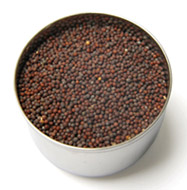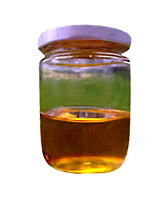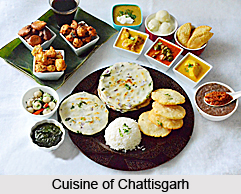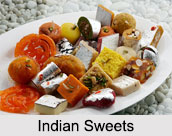 Botanical names: Brassica nigra Koch
Botanical names: Brassica nigra Koch
Brassica alba Linn.
Brassica hirta Linn
Brassica juncea (Linn) Czernjajev.
Family names:Crucifereae.
English names: True mustard or Black mustard. White mustard, India mustard or Brown mustard.
Indian names are as follows:
Hindi, Punjabi and Urdu:Banarasi Rai, Rai, Safed Rai, Kalee Sarson
Bengali:Sarisha
Assamese:Soriha
Gujarati:Rai
Kannada:Sasave
Kashmiri:Aasur, Sorisa
Sanskrit:Asuri, Bimbata
Tamil:Kadugu
Telugu:Avalu
Oriya:Soriso.
In India, mustard is known both as oil seed as well as spice. Internationally, however, it is more popular as a spice.
The genus Brassica consists of over 150 species of annual or biennial herbs several of which are cultivated as oil seed crops like mustard. Other oil seed crops in genus are toria and rapeseed. There are many other, which are cultivated mainly as vegetable like cabbage, collies flower, turnip etc. There are many other, which are being grown as fodder. The seeds of only the above four species have condiment value.
The oil yielding Brassicas that are predominantly cross pollinated, constitute a group about which considerable confusion exists, regarding their identification and nomenclature.
The mustard flour of commerce is a mixture of the flours of two types of mustard seeds; brown or black mustard (nigra) and white mustard (alba). Its condimental properties are largely due to the essential principles of these two seeds. The essential principle or volatile oil of the brown mustard is allyl isothiocyanate, while that of white or yellow mustard is acrimyl isothiocyanate. The essential principles are not present as such in the seeds of brown and white mustards but are produced as a result of hydrolysis of their respective glycosides, sinigrin (potassium myronate) and sinalbin, by the action of enzyme myrosin, in the presence of moisture under suitable conditions.
 White mustard or yellow mustard or Safaid rai is a self-sterile species, easily recognized by its hairy stem devoid of any bloom. It has irregularly pinnate leaves, large yellow flowers, and spreading, few seeded and hairy pods. These have long empty, knife-like beaks. The seeds are large, white, and lightly pitted and give considerable amount of mucilage with cold water.
White mustard or yellow mustard or Safaid rai is a self-sterile species, easily recognized by its hairy stem devoid of any bloom. It has irregularly pinnate leaves, large yellow flowers, and spreading, few seeded and hairy pods. These have long empty, knife-like beaks. The seeds are large, white, and lightly pitted and give considerable amount of mucilage with cold water.
These two species `alba` and `hirta` is the native of Southern Europe and Western Asia. They are grown only as garden crops in temperate Upper India, during winter. In India, it does not contribute to the supplies of mustard or mustard oil. Young leaves and tender shoots are used as potherb. They are mixed with black mustard for preparation of ground mustard.
Banarasi Rai or Black mustard is highly self-sterile and is quite distinct from other brassicas. The fruits at maturity are closely pressed to the inflorescence axis. The seed coat shows fine reticulations under a lens, and is mucilaginous. The outer epidermis is covered with a thin cuticle. This species (nigra) has been cultivated in Europe since the 13th century and is now reported to be growing wild. It appears to have been introduced only comparatively recently into India and is a cold season crop, grown to a limited extent in Uttar Pradesh, Uttaranchal, Punjab and Tamil Nadu. It does not contribute to the supplies of mustard oil.
The seeds yield 23 to 33% of the fixed oil. The volatile oil of mustard is obtained in a yield of 0.7 to 1.2% after the hydrolysis of the glucoside sinigrin, by the enzyme myrosin.
 For the preparation of volatile oil, the fixed oil is first expressed from the seeds, which are subsequently macerated with tepid warm water for several hours, and steam distilled. The oil obtained is an extremely powerful irritant owing to its volatility and penetrating power, and is responsible for the painful nature of alcohol, or in the form with 50 times its volume of alcohol, or in the form rubefacient. It is also used in cases of pleurisy and pneumonia.
For the preparation of volatile oil, the fixed oil is first expressed from the seeds, which are subsequently macerated with tepid warm water for several hours, and steam distilled. The oil obtained is an extremely powerful irritant owing to its volatility and penetrating power, and is responsible for the painful nature of alcohol, or in the form with 50 times its volume of alcohol, or in the form rubefacient. It is also used in cases of pleurisy and pneumonia.
Black mustard is ground with white mustard for preparing table mustard and also various medicinal preparations, such as bath mustard, mustard bran and mustard flour. The expressed oil has mild rubefacient properties and is used as a liniment. The technical oil obtained during the preparation of mustard also contains the oil from white mustard seeds. In India seeds of black mustard are used in pickles and curries.
Brassica juncea or Indian mustard or Rai is a self-fertile species, and is a very variable annual. Its narrow based leaves are not stem clasping like those of toria and sarson. Rai matures later than either. The seeds are rugose, reddish brown and generally smaller.
There are two races of Rai: a tall late and a short early. The latter is again divided into rough leaved and smooth leaved types.
Brassica juncea is a common field crop of Bihar, Uttar Pradesh, and West Bengal. It is also cultivated in China, Europe and Egypt. It is also cultivated in Afghanistan up to a limited extent.
The seeds contain:
Moisture:6.2%
Fat:35.5%
Nitrogenous matter:24.6%
Fiber:8%
Ash:5.3%.
The oil content of the seeds is usually 30 to 38%. Certain forms cultivated in Uttar Pradesh and locally known as Lahi, Lahta, have a higher oil content (42 to 43%).
Rai is an efficient substitute for black mustard. The USP recognizes this species as mustard. Brown mustard and the expressed oil of mustard prepared from the seeds of Brassica juncea are included in the IPC. The former should contain not less than 0.6% of allyl isothiocyanate.
There are also a number of hybrid mustards introduced and grown in India, which have commercial values for various reasons. Some are known for higher oil yield while some other are known for appropriate pungency for which they are popular as spice or as ground mustard.
Almost all types of mustard grown in India has some commercial value or other. While utilizing these resources appropriate products need to be chosen for ultimate commercial success. Some may be good for spice while other may be good oil seed. Technological need is also simple hence can be useful for implementing tiny village industrial units. In many parts of India mustard oil is being produced with the help of traditional oil ghanis. Since pressing is by cold pressing method the oil fetches better price in the market. The cold pressed mustard oil is normally valued.
 All the types of mustard flowers yield nectar. If beekeeping is practiced, it will give light colored honey with attractive aroma. This makes honey to granulate quickly thus creates an impression that the honey is adulterated by sugar. In India, mustard honey does not get market due to this reason in spite of its attractive taste and flavor. Best alternate would be to market this honey as a honey spread as has been practiced in Italy.
All the types of mustard flowers yield nectar. If beekeeping is practiced, it will give light colored honey with attractive aroma. This makes honey to granulate quickly thus creates an impression that the honey is adulterated by sugar. In India, mustard honey does not get market due to this reason in spite of its attractive taste and flavor. Best alternate would be to market this honey as a honey spread as has been practiced in Italy.
Farming of Mustard
In India, Mustard is the principal oil seed crop, like yellow sarson, brown sarson, toria and rai. Punjab rai is grown to a limited extent in the central districts of the Punjab. Banarasi rai and white mustard are also grown to a small extent. The seeds of these two species are used for the preparation of table mustard.




















